We're an affiliate
We hope you love the products we recommend! Just so you know, we may collect a share of sales or other compensation from the links on this page at no additional cost to you. Thank you if you use our links, we really appreciate it!
‘Massive’ is the word that comes to mind when visualizing a Mastiff dog breed. Despite being big-boned and muscular, the English Mastiffs have a gentle disposition and friendly demeanor.
These well-mannered family protectors can thrive as household companions so long as they receive enough care and love.
Keep reading this blog as we unpack all the relevant Mastiff dog breed info that you need to know when parenting this huge canine.
A Brief History of The Mastiff Dog Breed
Mastiffs are one of the oldest dog breeds in the world, with a possible ancestry linked to the now-extinct Molossian hound of the ancient Greeks.
Back in the day, these giant-sized dogs were used as fierce workers and protectors of farmsteads, livestock, and other properties.
The tremendous size and power of the Mastiffs made them good candidates for blood sports, where animals were pitted against each other for human entertainment.
After 1835, the future of the Mastiff dogs was uncertain when blood sports like bear-baiting, bull-baiting, and dog-fighting were outlawed in England.
However, the reappearance of dog show competitions in the mid-19th century played a significant role in reviving the Mastiff breed.

Even with their inherent guarding instincts, modern-day Mastiffs are lovers and not fighters. The current lineage was probably raised from the 19th century in England where bad traits were watered down.
Mastiffs might have arrived in the United States over 200 years ago, but they didn’t gain official recognition from the American Kennel Club (AKC) until 1885.
Established in 1929, the Mastiff Club of America (MCOA) continues to oversee the breed’s welfare nearly eight decades later.
Today, Mastiffs are adored worldwide for their gentle disposition and impressive stature, making them cherished companions in countless households.
5 Fascinating Facts About Mastiffs
1. Heavyweight champions
The heaviest dog breed in the world to be put on record was an old English Mastiff named Aicama Zorba of La Susa.
Aicama Zorba weighed 343 pounds and stood at an impressive 37 inches at the shoulder. This remarkable feat was documented in the 1989 edition of the “Guinness Book of Records.”
However, it’s worth noting that this record still holds to date because the organization ceased recognizing record sizes for pets in the year 2000.
2. Ancient art depicts massive type dogs
Dogs were presented in art during ancient times. Sufficient evidence suggests that dogs resembling Mastiffs inhabited the mountainous regions of Asia around 4,500 years ago, dating back to 2,500 B.C.E.
Remarkably, the British Museum contains bas-reliefs from the Babylonian palace of Ashurbanipal, depicting dogs strikingly similar to what we know as Mastiffs today, hunting lions in the desert.
3. Plymouth colonists may have brought Mastiffs to America
Despite the scarcity of historical records, it appears that Plymouth colonists aboard the Mayflower voyaged to America and came along with two dogs, a Mastiff, and a Spaniel.
However, it wasn’t until the late 1800s that the Old English Mastiff dog breeds were imported into the USA in substantial numbers.
4. Mastiffs’ puppies enjoy a longer puppyhood
Despite their large size as adolescents, Mastiffs don’t reach full physical and mental maturity until around 3 years old, unlike most other breeds which mature at 2 years.
During the entire growth phase, Mastiff puppies are prone to joint injuries, so it’s crucial to ensure they don’t overexert themselves while playing.
There’s no problem in playing with your Mastiff puppy, but activities like long walks, jumping over hurdles, or other strenuous exercises should be avoided until they get to 18 – 24 months of age.
5. Mastiffs don’t need rigorous exercises
Despite their imposing physical stature, English Mastiff dogs can do well with moderate exercise such as regular walks and runs.
These gigantic dogs are contented with being gentle family dogs, but they can excel in guarding your property and therapy services.
Mastiff Puppies
Owning an English Mastiff puppy can be a rewarding experience, yet one filled with responsibilities from day one.
It’s prudent to puppy-proof your home before bringing an English Mastiff from the breeder or adoption center. Have enough puppy accessories to keep your new dog happy and well-balanced.
We recommend carpeting the floor when raising a Mastiff puppy because a slippery floor can cause the dog’s paws to get crooked.
9 Types of Mastiff Dogs
1. Bullmastiff
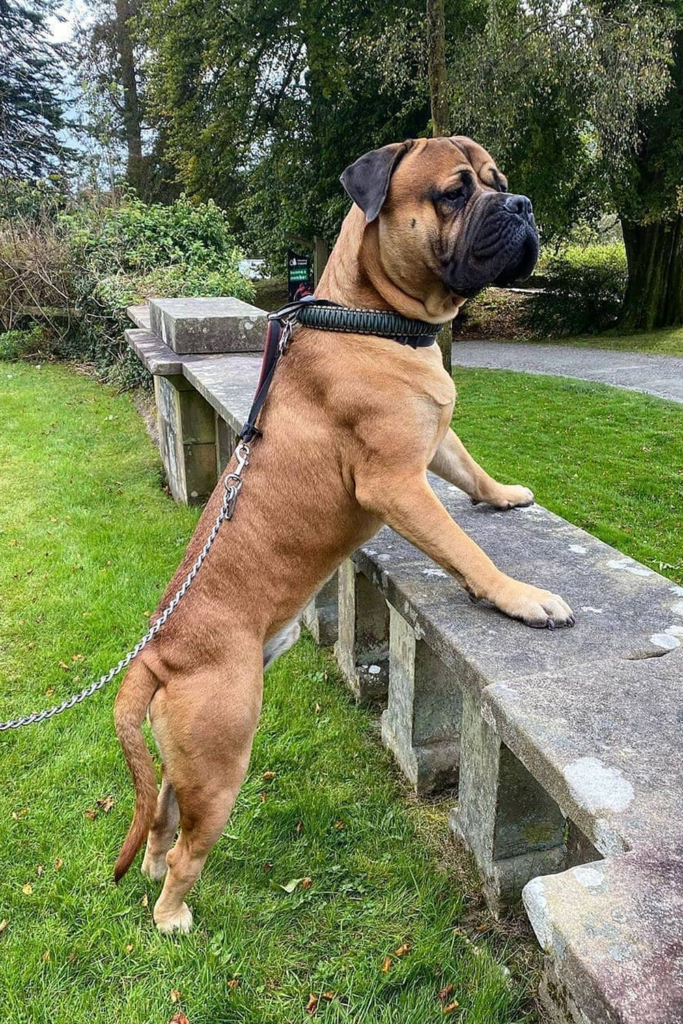
Native to England, Bullmastiffs (a cross between Bulldogs and Mastiffs) were developed as guardians of estates and gamekeepers’ companions, earning them the nickname ‘Gamekeepers night dog’
The impeccable friendly demeanor and loyalty of Bullmastiffs to their human caregivers can best be described by the term a dog is man’s best friend.
Bullmastiffs have high protective instincts, so it’s best to train them from an early age on how to discern visitors from strangers.
2. Dogue de Bordeaux (French Mastiff)
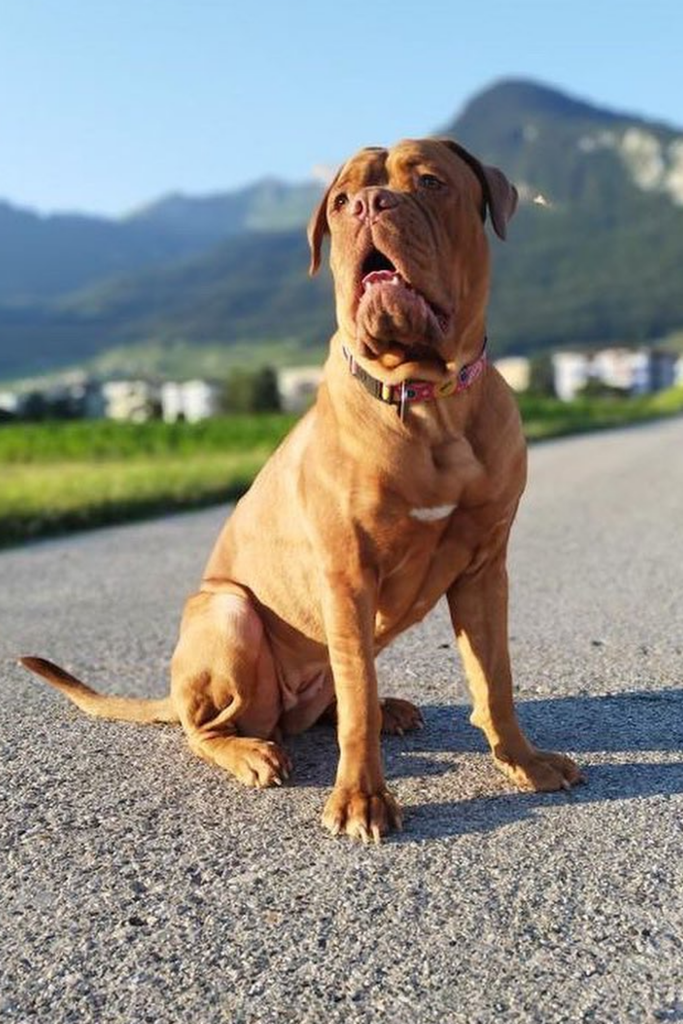
Originally bred in France, the Dogue de Bordeaux, also known as the French Mastiff or the Bordeaux Bulldog, boasts a powerful build and a distinctive wrinkled face.
These massive dogs we historically used as war dogs and they sadly took part in the now-outlawed bloody dog fighting sport.
Modern-day French Mastiffs can get along with children and they certainly make wonderful household companions.
3. English Mastiff (Mastiff)
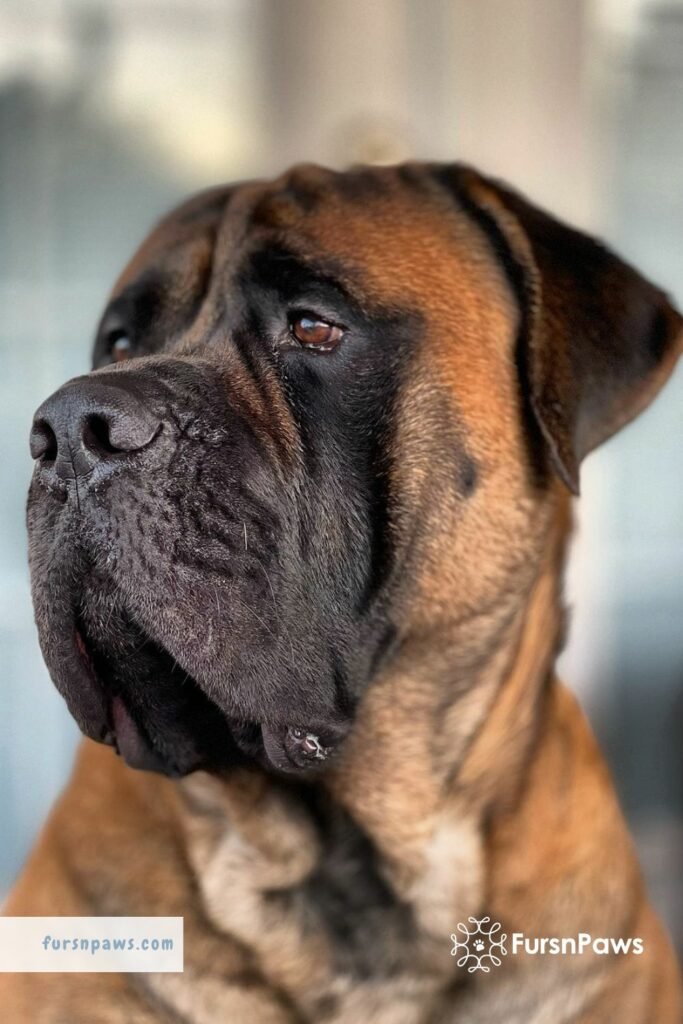
The original British Mastiff, also known as the English Mastiff, or simply the Mastiff, is one of the world’s largest dog breeds with historical roots from medieval times.
This enormous dog breed is good-natured and always eager to please their owners. Early socialization and consistent training should keep them at their best.
4. Fila Brasileiro (Brazilian Mastiff)

The Fila Brasileiro was originally developed in Brazil a few centuries back. They were highly priced for their strong body and protective powers which made them a good choice for hunters.
Scanty records exist about their exact ancestry but many historians believe they carry a bloodline of the ancient bulldogs, British mastiffs, and bloodhounds.
5. Italian Mastiff (Cane Corso)
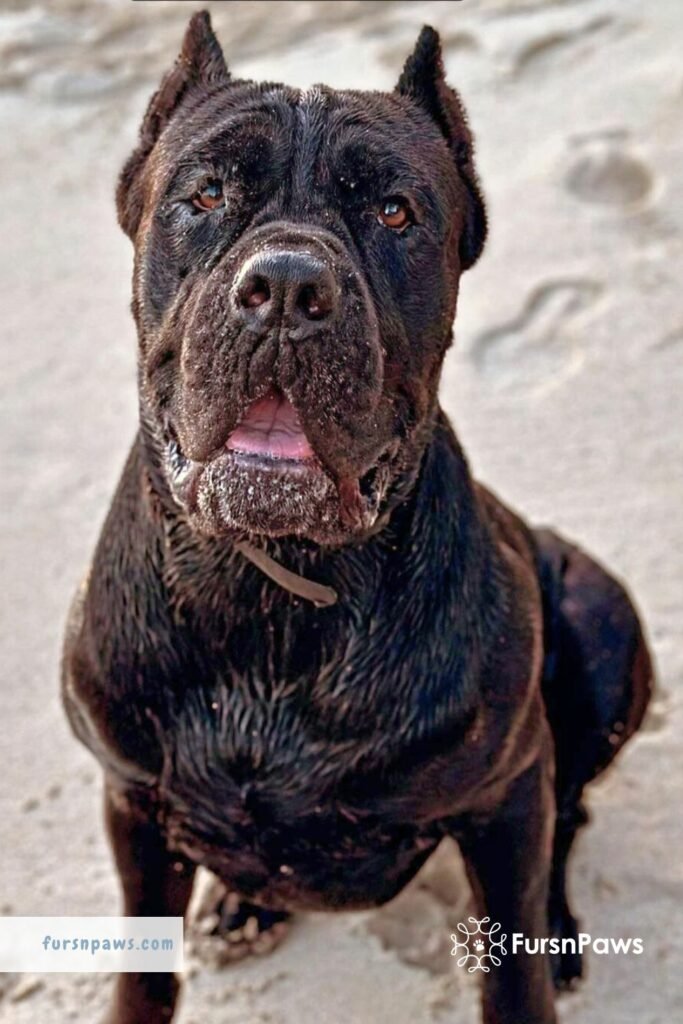
Cane Corso, also called the Italian Mastiffs, share the same lineage as the English Mastiffs developed from the now-extinct Molossus Hounds.
The Italian Mastiffs have in the recent past been fine-tuned to have a much smaller athletic body than the other Mastiff type of dogs.
6. Neapolitan Mastiff
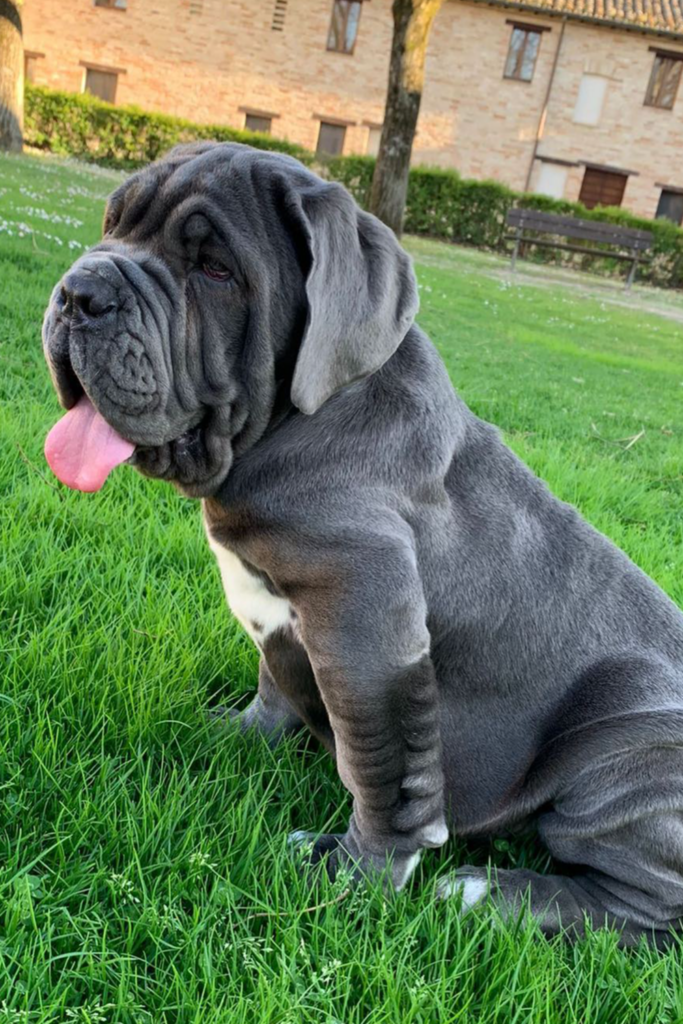
The Neapolitan Mastiff, with its massive physique, wrinkled skin, and commanding expression, bears a striking resemblance to the formidable war dogs of Ancient Rome.
It is widely believed that this Mastiff canine was selectively developed to exude an intimidating presence, serving as a natural protector to potential enemies.
7. South African Mastiff (Boerboel)
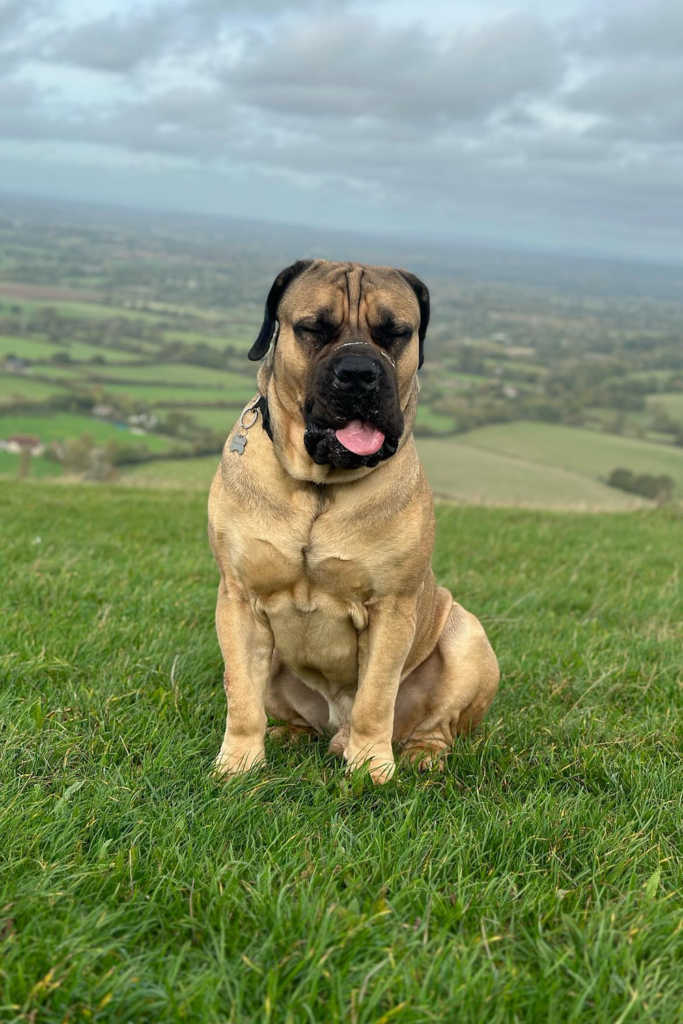
As the name suggests, the Boerboel (Afrikan name for farmer’s dog) was originally developed in South Africa by crossing the Mastiff dogs brought by European settlers with indigenous African dogs.
Boerboel played a significant historical role in protecting livestock and keeping potential human intruders at bay.
8. Spanish Mastiff
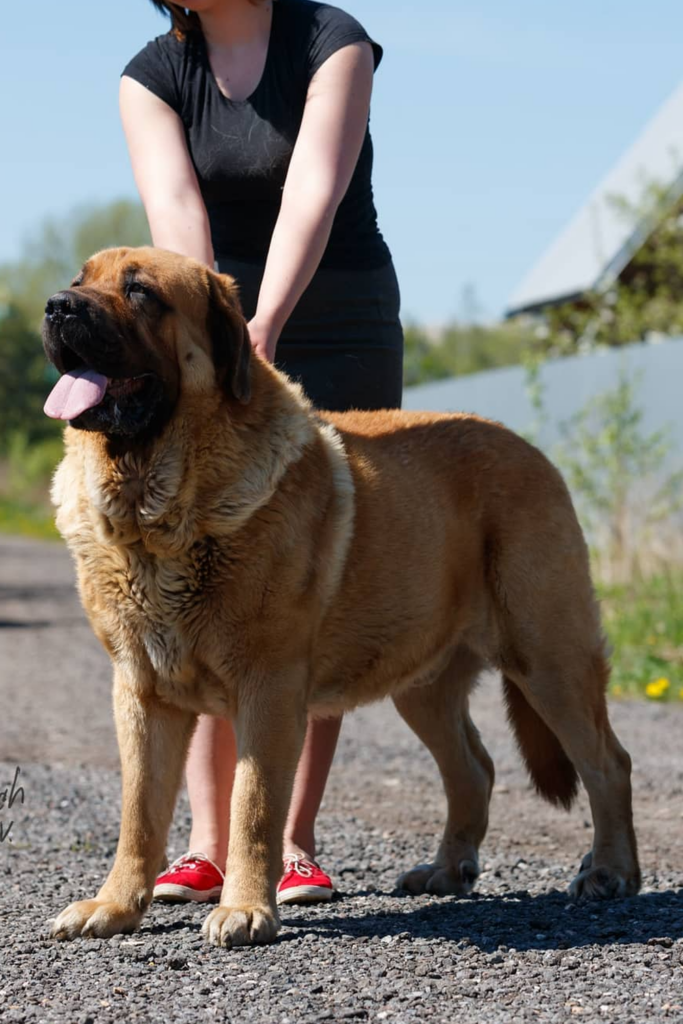
The exact origin of the Spanish Mastiff is uncertain, but they gained their name because of their massive use by 10th-century Spaniards in sheep farming.
Spanish Mastiffs are typically laid back and gentle with their immediate human caregivers, but they can be cautious toward other dogs and unfamiliar people.
9. Tibetan Mastiff

The exact history of the Tibetan Mastiff remains somewhat elusive compared to other breeds, largely due to Tibet’s isolation and limited written records about the breed.
Nevertheless, this majestic canine has existed for millennia in Central Asia, where they served as a formidable guardian of estates.
With an ancestry rooted in the rugged landscapes of Tibet, the Tibetan Mastiff has preserved its innate protective instincts across generations.
Today, these magnificent dogs remain dedicated to safeguarding their territory and human companions with unwavering loyalty and boundless determination.
English Mastiff Physical Characteristics
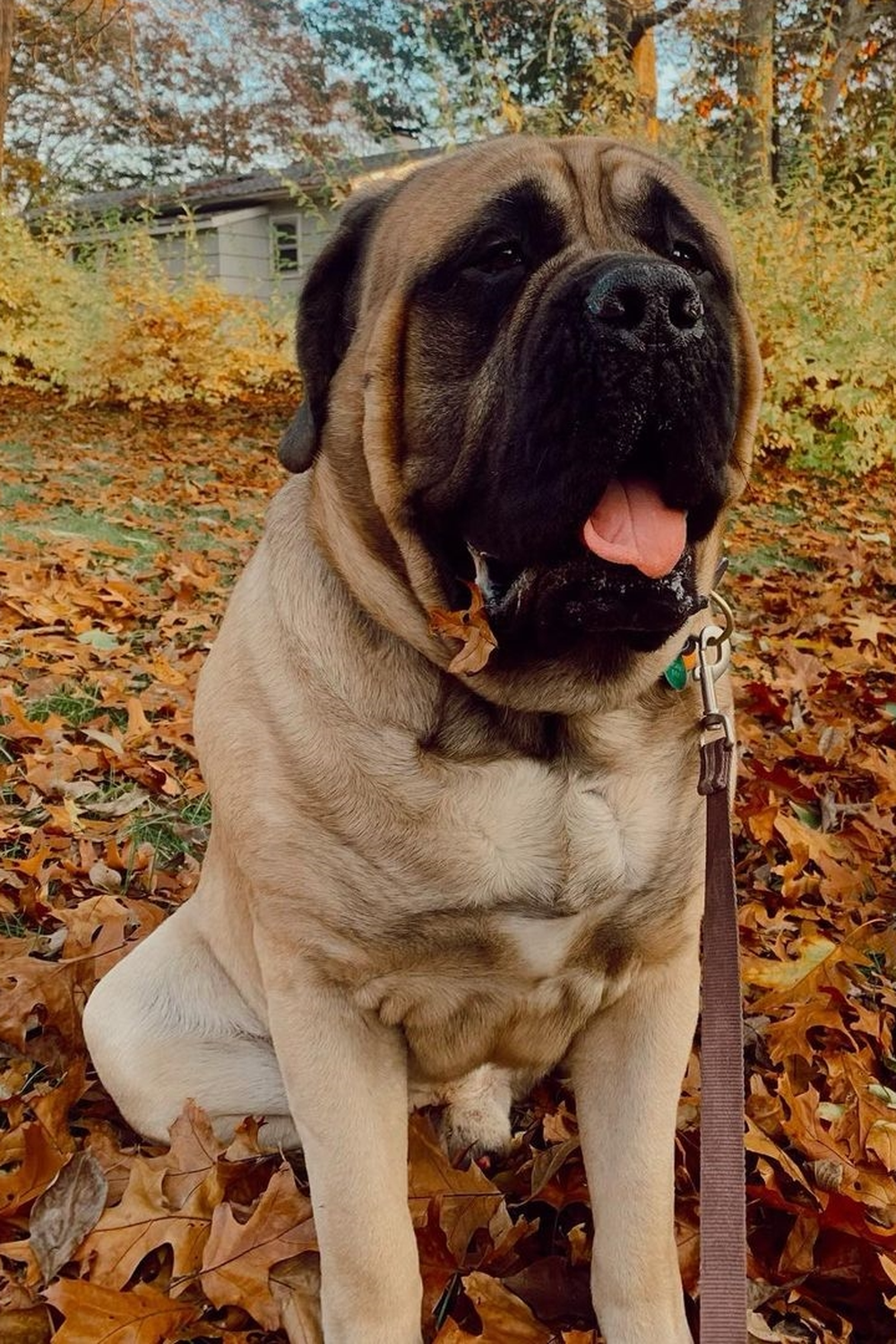
Size and Weight
A full-grown English Mastiff male dog can stand 30 inches from the ground and tip the scale to about 200 pounds.
Female English Mastiff dogs have an average shoulder height of about 27 inches and they can reach an imposing healthy weight of about 150 pounds.
Coat Characteristics
English Mastiffs sport a short dense coat that can provide enough protection against harsh weather during the winter.
Their exterior appearance comes in various colors including apricot, brindle, and fawn. Most notably, brindle mastiffs usually have dark stripes overlayed in an apricot or fawn background.
Distinctive features
The English Mastiff is a big and strong dog with a distinctive square head, short muzzle, and droopy jowls. They often have a characteristic black mask around their small dark eyes and nose.
Their small ears are darker in shade and hang down. The Mastiff’s tail sits high on the back, narrows to a point, and reaches down to the dog’s hocks.
Mastiff Temperament and Personality
Although their outward physical appearance can be formidable and intimidating, the English Mastiff have a good-natured and calm temperament making them a good choice for families.
The Mastiff dogs will gladly show their protective nature when impeding danger hits their beloved family or properties.
Mastiff Intelligence
The English Mastiff are not considered highly intelligent because their historical roles were quite simple requiring the dog’s physical stamina and very little brain work.
English Mastiffs have a quiet and eager-to-please attitude which can sometimes be mistaken for inherent stubbornness if they’re confused about what to do.
Consistent short-session and fun-filled training can help keep your Mastiff in their best condition while reducing undesirable traits.
Mastiff Average Lifespan
The average life expectancy of a typical Mastiff ranges from 6 to 12 years, although some individuals may live longer with the right genetics, proper care, and high-quality nutrition.
Unfortunately, the lifespan of the Mastiffs appears to be distressingly short when compared to other dog breeds due to their massive size. Larger dog breeds experience age-related decay faster than small dogs.
Mastiff Common Health Issues and Genetic Disorders
Mastiffs can be prone to a few health issues, so responsible breeders should tirelessly work according to the dictates of the breed standards outlined by kennel clubs like AKC.
The following are some of the common health issues that may affect an English Mastiff:
- Hip dysplasia
- Eye Anomalies
- Elbow hygroma
- Degenerative Myelopathy
- Epilepsy
- Gastric Dilatation and Volvulus
- Cancers such as mast cell tumors, and lymphoma
Preventative Measures for Good Health
In a bid to reproduce healthy puppies, responsible breeders should always screen the potential parents to rule out any predisposed conditions. It’s also worth investing in a good insurance cover for your pet.
Good diet and proper nourishment form the cornerstone of healthy dogs from puppyhood into their adult lives.
Make sure your Mastiff dog gets enough food without forgetting a constant supply of clean drinking water to keep them strong and healthy at all times.
Mastiff and Allergies
Just like humans, your Mastiff dog can experience seasonal allergies triggered by various allergens such as dust and pollen.
Some of the common symptoms of these environmental reactions include sneezing, itchy skin, ear infection, runny nose, and red eyes.
Mastiff Grooming Needs
English Mastiffs have a short dense coat that should be easy to maintain with routine grooming such as regular brushing and occasional bathing.
Brushing your Mastiff dog regularly with a slicker brush will help control shedding by gathering loose hair and keeping their outward coat soft and shiny.
Keep a close check on your Mastiff’s ear canal to ensure there’s no infection. A cotton wool ball dipped in a vet-approved ear cleanser can work well to maintain a healthy canal.
Plan regular nail trims to keep your dog’s paws in good condition and remember to brush their teeth at least thrice a week.
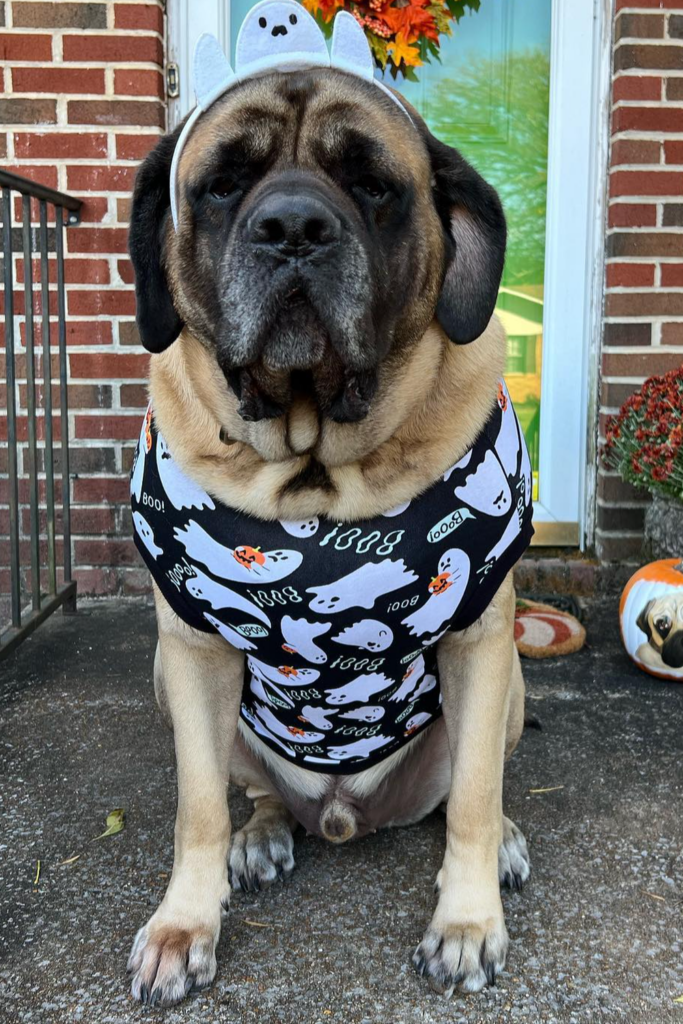
It’s also vital to inspect the facial folds and wipe them in between the folds to remove moisture or drool since they can form a breeding ground for bacteria.
English Mastiffs can splash drool when shaking their black-masked heads because they can salivate a lot. We recommend having a drool rag handy to take care of ensuing messes.
Mastiff Exercise Needs and Activity Levels
Despite their gigantic size, the English Mastiff are quite sedentary compared to other large breed dogs. Routine physical exertion for about one hour per day will keep your dog fit, strong, and motivated.
The exercise period can be split into multiple short sessions depending on your schedule, but it’s recommended to work out your Mastiff during the cool hours of the day.
Daily walks, intermittent runs, occasional hikes, and interactive play sessions are enough to keep your English Mastiff in good shape.
Importance of mental stimulation
In addition to strengthening your bond, mental stimulation can help keep your dog sharp and improve their problem-solving abilities.
Elderly Mastiffs can also benefit from mental stimulation by fighting off early symptoms of canine dementia and emotional distress.
Interactive activities like constituent obedience training, puzzle games, and socialization can all engage your dog’s mind for the better.
Mastiff Training and Socialization
Your English Mastiff puppy should be enrolled in a kindergarten class as soon as possible for early obedience training and socialization.
You can also socialize your Mastiff by exposing them to different people, scenarios, and other pets within a controlled environment.
Once your English Mastiff is confident and has established trust in you, then training them on other roles can be easy. We recommend positive reinforcement techniques when training your dog.
Mastiff Living Condition
The bulky statue and lively nature of Mastiffs demands a living space where they can access a spacious yard whenever needed.
Mastiffs can however live in apartments so long as they are given attention and enough opportunities to play outdoors. Dog owners living in close quarters should plan for regular trips to a nearby dog park.
Mastiff Diet & Nutrition
Finding the best food regimen for your Mastiff will ultimately boil down to the individual dog and their specific nutrient needs.
It’s always a great idea to discuss your dog’s dietary needs with a qualified vet because they can make tailored recommendations based on the dog’s medical history.
Generally, a young Mastiff should be given puppy-specific food for large breed dogs to ensure a steady growth rate.
Fully grown English Mastiff dogs can have between 6 – 8 cups of dry food each day, split into two or three feeding sessions to prevent bloating.
You can check out slow feeders to hold up your Mastiff’s eating speed. A nutritious diet is not complete without clean drinking water, so be sure to provide enough for your dog.
Mastiff’s Pregnancy and liter size
A healthy female Mastiff can birth between 6 to 10 puppies after about 63 days of pregnancy, with considerable differences seen across individual dogs based on factors such as the mother’s health.
Conclusion
The English Mastiff dog breed is an incredibly gigantic canine well known for their stable temperament and rich history.
If you’re planning to own a Mastiff dog, we ask that you do plenty of research before bringing one into your home.
Talk to current owners of this massive breed and reputable breeders to get a bird’s view of what to expect before you commit.
Laura is the founder of Furs'n'Paws. She is a also a pet writer and expert with more than 20 years of experience of working with dogs and cats. She developed a very strong love for animals at a young age. Her passion led her to establish a thriving pet sitting and dog walking business in Dubai. As an expert in pet training, behavior, and nutrition, Laura is committed to helping pet owners and pet lovers by offering high-quality information on a wide range of topics.



No responses yet